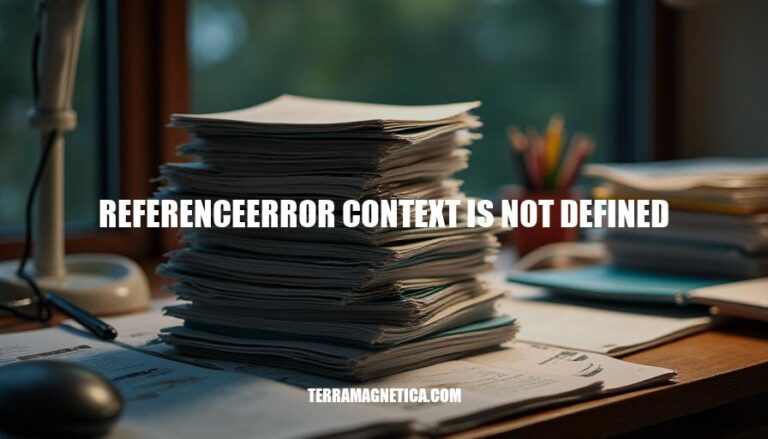


The ReferenceError: context is not defined is a common error in JavaScript programming. It typically occurs when a variable or object named context is referenced but hasn’t been defined within the current scope. This error is particularly relevant in scenarios involving asynchronous code, closures, or when using testing frameworks like Mocha, where context might be expected but isn’t properly set up. Understanding and resolving this error is crucial for debugging and ensuring smooth execution of JavaScript code.
Here are the primary causes of the ReferenceError: context is not defined:
var, let, or const.Here are specific code examples illustrating the ReferenceError: context is not defined error:
function exampleFunction() {
console.log(context);
}
exampleFunction(); // ReferenceError: context is not defined
const context = "This is the context";
function exampleFunction() {
console.log(context);
}
exampleFunction(); // This is the context
function exampleFunction() {
const context = "This is the context";
}
console.log(context); // ReferenceError: context is not defined
let context;
function exampleFunction() {
context = "This is the context";
}
exampleFunction();
console.log(context); // This is the context
These examples should help you understand and resolve the ReferenceError: context is not defined error.
Here’s a step-by-step guide to resolve the ReferenceError: context is not defined error, along with best practices for variable declaration and scope management:
Identify the Error Location:
Check Variable Declaration:
context is declared before it is used.let context;
context = "some value";
Verify Scope:
function example() {
let context = "some value";
console.log(context); // Works here
}
console.log(context); // ReferenceError: context is not defined
Use Proper Declaration Keywords:
let, const, or var to declare variables. Avoid using undeclared variables, especially in strict mode."use strict";
let context = "some value"; // Correct
context = "another value"; // ReferenceError if not declared
Check for Typos:
let context = "some value";
console.log(contex); // ReferenceError: contex is not defined
Use let and const:
let and const over var for block-scoped variables.let context = "some value"; // Block-scoped
const constantValue = 42; // Block-scoped and immutable
Minimize Global Variables:
function example() {
let context = "some value"; // Local scope
}
Use Descriptive Names:
let userContext = "some value"; // Descriptive name
Initialize Variables:
let context = "some value"; // Initialized
Avoid Hoisting Issues:
var and avoid it by using let and const.console.log(context); // ReferenceError with let/const
let context = "some value";
By following these steps and best practices, you can effectively resolve the ReferenceError: context is not defined and manage variable scope properly.
Here are some tips and strategies to prevent the ‘ReferenceError: context is not defined’ in your code:
"use strict"; at the beginning of your scripts to enforce stricter parsing and error handling.Implementing these practices can help you avoid common pitfalls and improve code quality.
To resolve the ‘ReferenceError: context is not defined’ issue, it’s essential to understand the basics of variable scope in JavaScript.
The error occurs when trying to access a variable that has not been declared or initialized within its current scope.
Proper variable management involves using `let` and `const` instead of `var`, as they provide block-scoped variables and prevent hoisting issues. Always initialize variables when declaring them, and use descriptive names to avoid confusion.
"use strict"; at the beginning of your scripts.By implementing these practices, you can effectively manage variable scope and prevent common pitfalls like ‘ReferenceError: context is not defined’ in your JavaScript code.